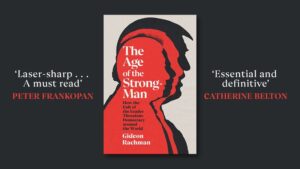 The strongman model of autocracies like China has seemed so successful it has spawned imitators: Erdogan in Turkey, Bolsonaro in Brazil, Duterte in the Philippines, along with second-division authoritarians such as Viktor Orban in Hungary, notes Gerard Baker.
The strongman model of autocracies like China has seemed so successful it has spawned imitators: Erdogan in Turkey, Bolsonaro in Brazil, Duterte in the Philippines, along with second-division authoritarians such as Viktor Orban in Hungary, notes Gerard Baker.
But our well-worn tendency to overstate our weaknesses and underestimate our opponents’ has this year been challenged by welcome evidence of our adversaries’ many vulnerabilities, he writes for The Times:
More interesting and consequential has been what has been happening in China. Xi Jinping’s decision to tie himself like a mascot panda to Russia’s rusting armies in his “no limits” pact with Putin in February was only one of a series of missteps that are casting doubt on the supposed superiority of Chinese leadership. As a new report by the Rhodium Group, an always valuable source of analysis on modern China, puts it: “2022 represents a watershed in questioning long-held perceptions of China’s technocratic competence and capacity.”
Over a longer horizon, China’s growth outlook is constrained by demographics, falling productivity, and more significantly, the failed structural reforms of the past decade, as Rhodium’s Dan Rosen highlighted in detail in a recent piece in Foreign Affairs.







